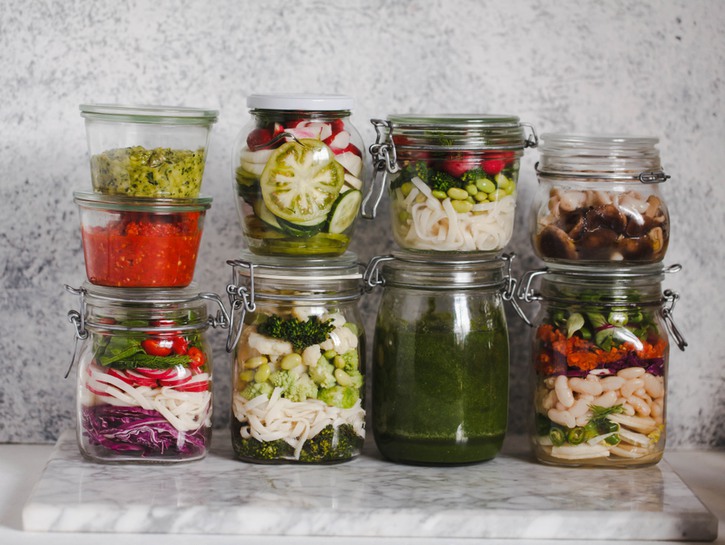So you want to start the keto diet. The high-fat, low-carb diet is gaining popularity as more and more people find out that they can lose weight through forcing their system into ketosis. In the metabolic state of ketosis, your body begins generating energy from fat as opposed to glucose from carbs as it normally would. Essentially, you’re still allowed to eat butter, meat, and cheese, just no carbs like bread, rice, and pasta.
If you’re unsure of how to get started, consider meal prepping alternate items from our keto diet sample meal plan. Remember that any diet is more fun when you’re focused on eating the foods you actually like, instead of thinking about all the things you can’t eat. So don’t be afraid to try different combinations while you figure out what works for you.
Sample Meal Plan
Breakfast
Option 1: A spinach, mushroom, and feta omelet will keep you feeling full all morning with its proteins and healthy fats.
Option 2: Coconut Flour Breakfast Cereal is grain-free, and can be sweetened to taste.
Lunch
Option 1: Cheeseburgers (minus the bun!) with green beans and mushrooms sautéed in butter and garlic is a delicious meal prep idea full of variety and flavor.
Option 2: Pulled pork, eggs, cheddar, and cherry tomatoes on lettuce is perfect for portioning out while meal prepping.
Dinner
Option 1: Salmon with broccoli and cheese is high in heart-healthy fats and fiber, but low in carbs.
Option 2: Asparagus-stuffed chicken parmesan is surprisingly easy to make, as well as gluten-free.
Snack
Option 1: For a great mix of fat and protein, try a breadless mini BLT, adding turkey, avocado, or spicy guacamole according to your tastes.
Option 2: Stuffed mushrooms with goat cheese, turkey bacon, and cauliflower are decadent, but super healthy and nutritious.
When To Eat
A unique component of the keto diet is that you’re not discouraged from eating when you’re hungry. You can pretty much eat whenever you want – from three to six meals a day – as long as you’re eating when your body is hungry and avoiding carbs while eating the right foods at the right ratios. (Always aim for your meals to be about 70% calories from healthy fat, 20% protein, and 10% carbs, while consuming less than 50 grams of carbs per day.)
How Much To Eat
One of the most beloved aspects of the keto diet is that you’re not required to track how much you consume – unlike other diets that make you count calories. Of course, participants are always welcome to track their caloric intake while on the keto diet, but it’s not a necessary component and isn’t a dealbreaker for success.
If you’re an especially active person, the one thing to keep in mind is that adjusting your carb intake on days you’re rigorously exercising can be a big help to your body. Based on your size and workout intensity, consider increasing your carb consumption on days you have heavy exercise planned, but keep these exception days limited to just two or three days a week.
